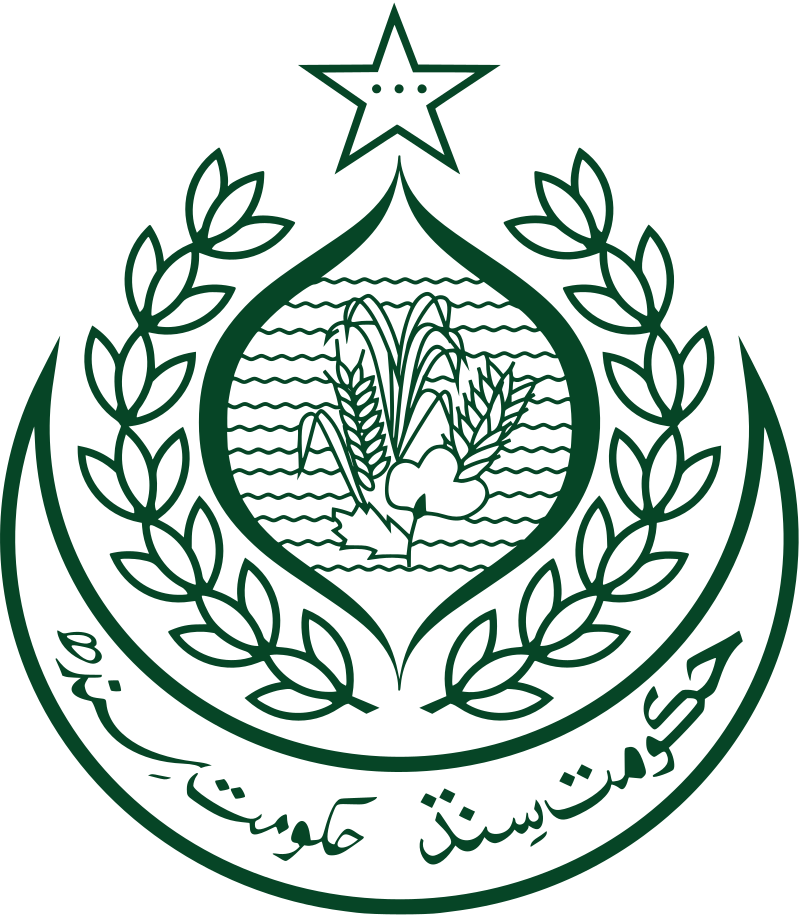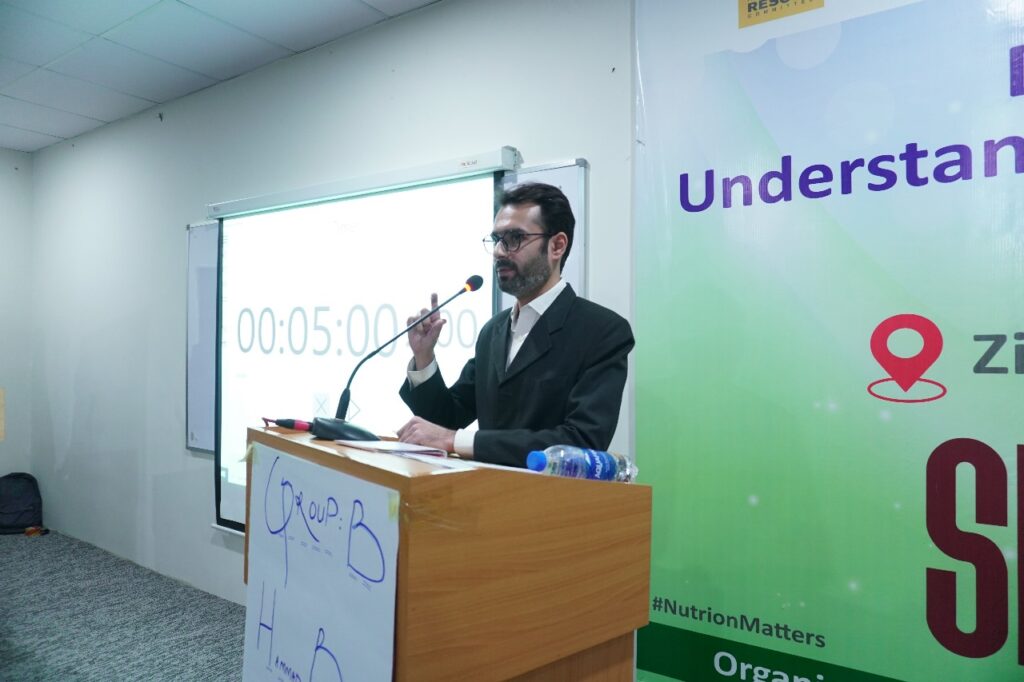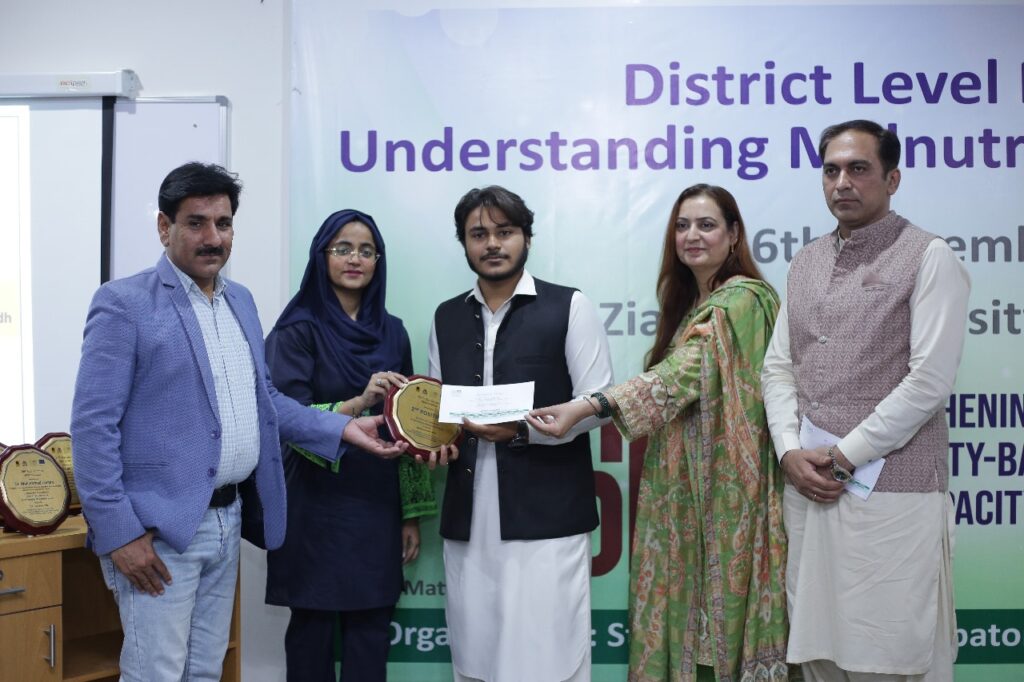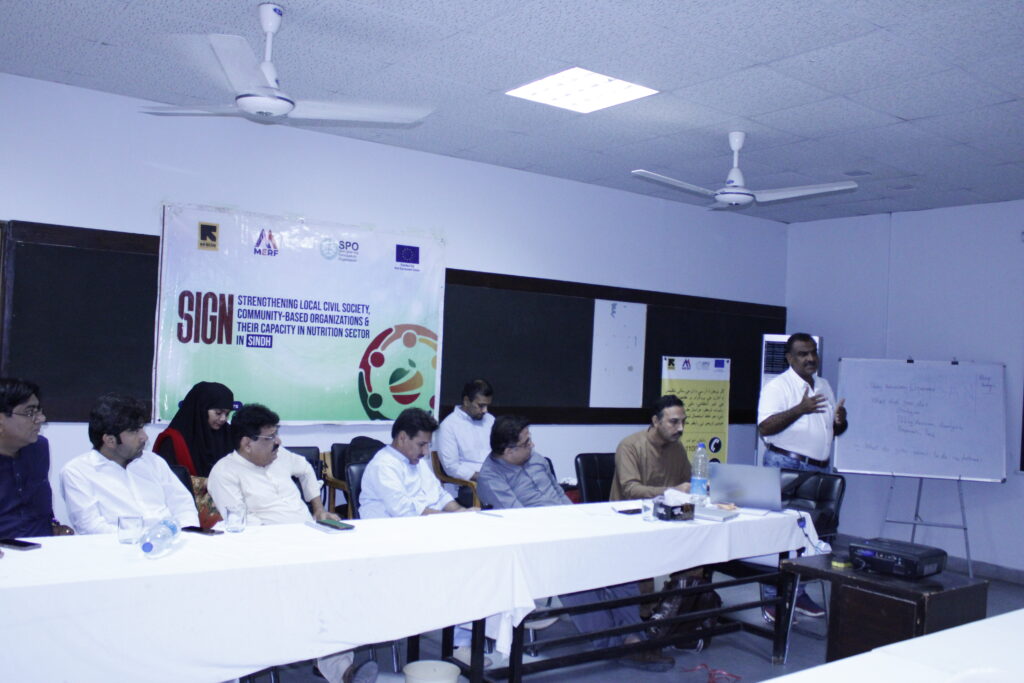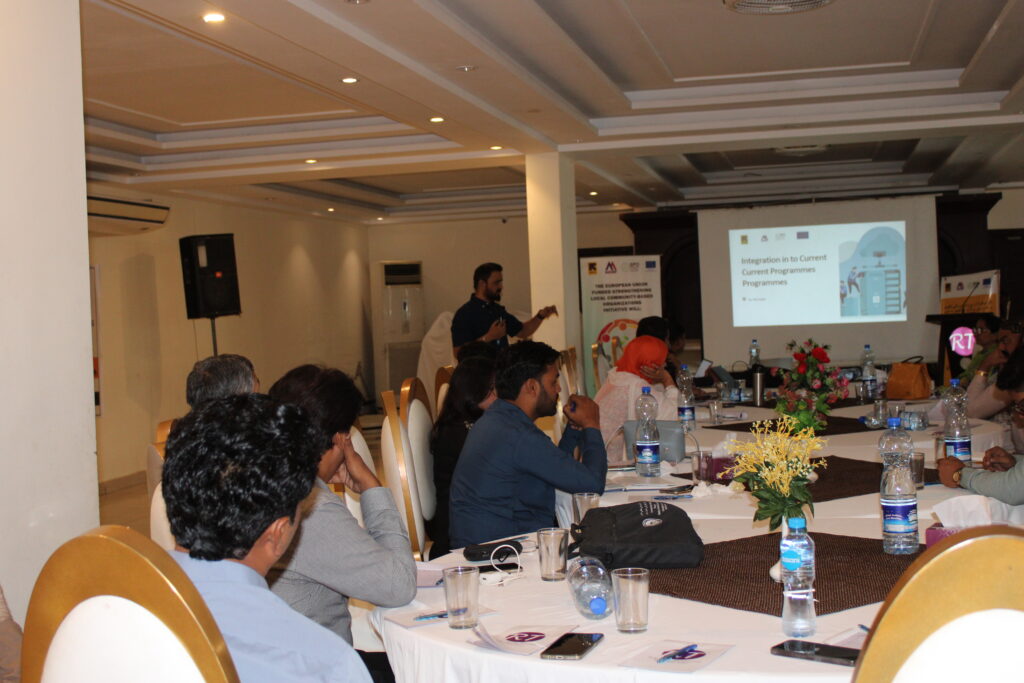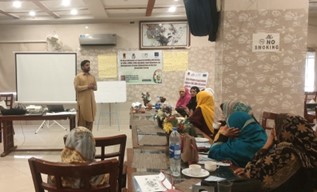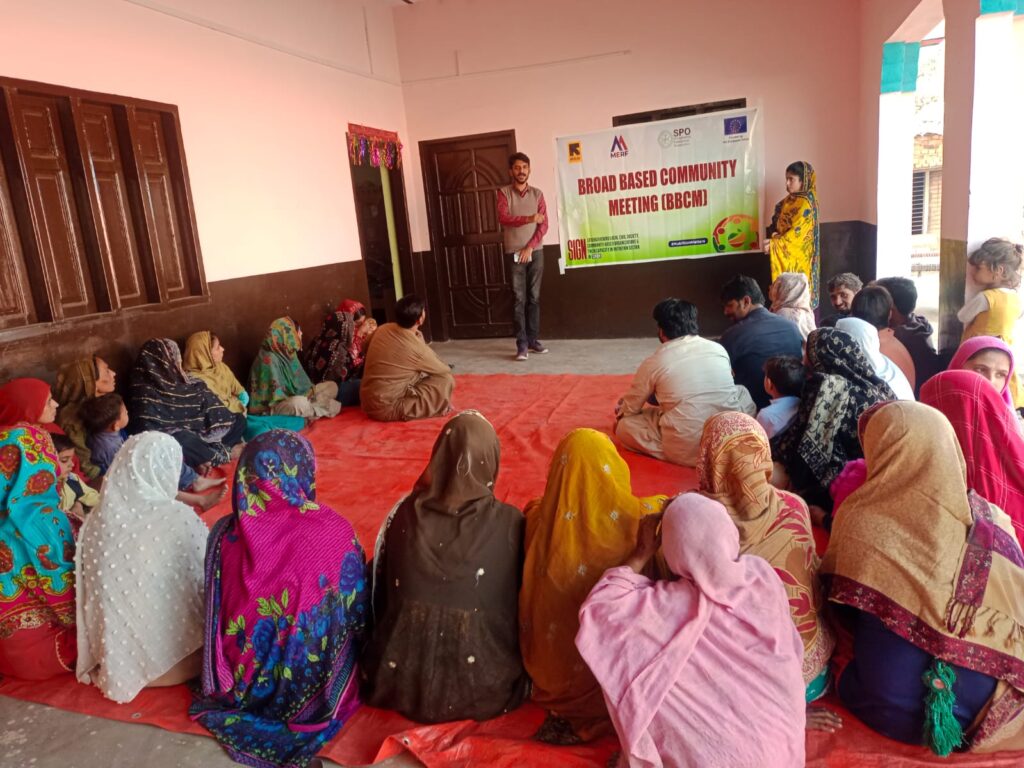AAP Task Force Secretariat for Nutrition Planning & Development Department GOS
AAP Sindh is Multi-Sectorial Action Plan for Nutrition. AAP is spearheading the collaborative efforts amongst all relevant sectors namely: Health, Education, Population, Local Government (WASH), Social Protection, Agriculture, Fisheries and Livestock.
Latest Updates
About Us
Accelerated Action Plan for Reduction of Stunting and Malnutrition (AAP) is a 10-year plan for improving health and nutrition of children as well as their mothers in Sindh province. Government of Sindh initiated AAP in 2017 in collaboration with World Bank, European Union, UNICEF, World Food Program and other development partners. Stunting is the impaired growth and development that children experience from poor nutrition, repeated infection, and inadequate psychosocial stimulation. Keeping in view the nature of the challenge, first time multi-sector approach has been adopted in the shape of AAP.
Now AAP is a flagship program of Government of Sindh. The plan involves both nutrition-specific and nutrition-sensitive interventions focused on pregnant women, lactating mothers and children under age of five years. There are seven sectors viz. 1) Health, 2) Education, 3) Livestock, 4) Fisheries, 5) Agriculture, 6) Population Welfare, 7) Local Government (WASH). These sectors are implementing their respective activities across 23 prioritized districts of the province, where prevalence of stunting is above 40 percent. Overall budgetary allocation for AAP sectors under current fiscal year 2024-25 is Rs.6 billion. As a result of AAP implementation, stunting has reduced from 48% to 45.5% in Sindh (Source: NNS 2018)
Accelerated Action Plan for reduction of Stunting & Malnutrition is multi-sectoral plan of action prepared by the government of Sindh, led by the Planning & development Board in collaboration with development partners. the plan focuses on international best practices to combat Malnutrition by adopting nutrition specific and nutrition sensitive interventions.
AAP Nutrition Government of Sindh
Accelerated Action Plan for reduction of Stunting & Malnutrition in Sindh
Who We Help
We support undernourished communities, especially vulnerable children and families.
How We Help
We provide sustainable nutrition programs, education, and resources to combat hunger.
Our Technical Expertise
Our team specializes in food science, community health, and agriculture solutions.
AAP 7 sector based complete program
Education
WASH
Livestock
Agriculture
Fisheries
Health (PPHI)
Population Welfare Department (PWD)
AAP 7 sector based complete program
The Accelerated Action Plan (AAP) for Nutrition in Sindh involves multiple sectors working together to address the complex issue of malnutrition. The success of the program depends on the coordinated efforts of various sectors, each contributing to different aspects of nutrition and health. Here are the key sectors involved in the program:
- Health Sector (PPHI)
- Agriculture Sector
- Education Sector
- Water, Sanitation, and Hygiene (WASH) Sector
- Livestock Sector
The health sector plays a central role in the AAP for Nutrition, focusing on the prevention and treatment of malnutrition and improving overall healthcare services.
- Nutrition Services: Providing nutrition counseling, micronutrient supplementation (e.g., vitamin A, iron), therapeutic feeding for severely malnourished children, and regular growth monitoring for children.
- Maternal and Child Health: Ensuring maternal health services (e.g., antenatal care, nutrition counseling for pregnant and lactating women) to improve nutritional outcomes for both mothers and children.
- Capacity Building: Training healthcare workers, including doctors, nurses, and community health workers, to identify, manage, and treat malnutrition effectively.
- Health Facilities: Strengthening and expanding health services such as nutrition clinics and mobile health units in rural and remote areas.
ACTIVITIES/ INTERVENTION
896 OTP (Outpatient Therapeutic Programme) has been established
25 NSC (Nutrition stabilization centers) established across 23 districts
- 7 million Children have been screened
- 724442 children aged 6 to 59 months have been registered at OTP
- 28087 SAM (Severe Acute Malnutrition)children with complications treated at NSCs
- 333669 RUTF(Ready to use Therapeutic food) have been supplied the OTP and NSC for treatment of SAM (Severe Acute Malnourished) children
The AAP Agriculture Sector promotes dietary diversity through new cultivation and consumption approach of Agriculture for Nutrition by establishing Kitchen Gardens (KGs) and Farmer Field Schools (FFS) with the aim of improving the availability of nutritious food for rural population especially malnourished female and children. Most of the poor living in rural areas, are malnourished in large part because they subsist on monotonous diets comprised of stretchy staples lacking essential nutrients. These families, particularly those who work in agriculture, rely on what is available in their local markets to feed themselves and their families. There are opportunities across entire value chain for farmers and other food actors to help make nutritious food more affordable and accessible to vulnerable population. AAP Agriculture Sector is contributing by helping target households increase availability of diversified vegetable and fruits for consumption by Ø Introducing small-scale vegetable farming and Kitchen gardens Ø Introducing Labor-saving technologies for women; Ø Improving the quality of production through trainings Ø Introducing recipes of food consumption
This sector is crucial in ensuring that communities have access to a diverse, nutritious, and sustainable food supply.
- Sustainable Agriculture: Promoting the production of nutrient-rich foods like fruits, vegetables, legumes, and fortified grains to increase food security and improve diets.
- Food Fortification: Encouraging the fortification of staple foods like flour, salt, and cooking oil with essential vitamins and minerals to combat micronutrient deficiencies.
- Food Distribution: Facilitating the distribution of nutritious food packs and supplements, especially to vulnerable populations such as children and pregnant women in food-insecure regions.
ACTIVITIES/ INTERVENTION
- Cumulative Number of Kitchen Gardens
Establishment of total 2681 kitchen gardens, out of which 870 main kitchen garden which is further replicated to 1181.
- Establishment of Farmers Field School Male & Female
Establishment of 1450 Male & 870 Female Famers Field in 23 Districts of Sindh
The education sector helps in raising awareness about nutrition and good feeding practices through formal and informal channels.
- School Feeding Programs: Implementing school-based nutrition programs that provide nutritious meals to children and promote healthy eating habits.
- Nutrition Education: Integrating nutrition education into school curricula, so that children and their families learn the importance of proper nutrition from an early age.
- Community Engagement: Engaging local communities in educational campaigns through schools and community centers to promote good nutritional practices.
Adequate sanitation and hygiene practices are closely linked to nutrition and health outcomes.
- Safe Drinking Water: Ensuring access to safe drinking water to prevent waterborne diseases, which often exacerbate malnutrition.
- Sanitation and Hygiene Promotion: Promoting better sanitation practices such as handwashing with soap and safe waste disposal to prevent infections and diseases that can compromise nutritional health.
- WASH Infrastructure: Improving infrastructure in rural and urban areas to ensure clean and hygienic environments, especially for children.
The livestock sector plays a pivotal role in the AAP by:
- Improving Food Security: Enhancing livestock productivity contributes to better food availability and diversity.
- Providing Nutrient-Rich Foods: Livestock products like milk, meat, and eggs are rich in essential nutrients, supporting better nutrition.
- Economic Empowerment: Supporting livestock farming can improve the livelihoods of rural communities, indirectly benefiting nutrition.
- Health Sector (PPHI)
- Agriculture Sector
- Education Sector
- Water, Sanitation, and Hygiene (WASH) Sector
- Livestock Sector
The health sector plays a central role in the AAP for Nutrition, focusing on the prevention and treatment of malnutrition and improving overall healthcare services.
- Nutrition Services: Providing nutrition counseling, micronutrient supplementation (e.g., vitamin A, iron), therapeutic feeding for severely malnourished children, and regular growth monitoring for children.
- Maternal and Child Health: Ensuring maternal health services (e.g., antenatal care, nutrition counseling for pregnant and lactating women) to improve nutritional outcomes for both mothers and children.
- Capacity Building: Training healthcare workers, including doctors, nurses, and community health workers, to identify, manage, and treat malnutrition effectively.
- Health Facilities: Strengthening and expanding health services such as nutrition clinics and mobile health units in rural and remote areas.
ACTIVITIES/ INTERVENTION
896 OTP (Outpatient Therapeutic Programme) has been established
25 NSC (Nutrition stabilization centers) established across 23 districts
- 7 million Children have been screened
- 724442 children aged 6 to 59 months have been registered at OTP
- 28087 SAM (Severe Acute Malnutrition)children with complications treated at NSCs
- 333669 RUTF(Ready to use Therapeutic food) have been supplied the OTP and NSC for treatment of SAM (Severe Acute Malnourished) children
The AAP Agriculture Sector promotes dietary diversity through new cultivation and consumption approach of Agriculture for Nutrition by establishing Kitchen Gardens (KGs) and Farmer Field Schools (FFS) with the aim of improving the availability of nutritious food for rural population especially malnourished female and children. Most of the poor living in rural areas, are malnourished in large part because they subsist on monotonous diets comprised of stretchy staples lacking essential nutrients. These families, particularly those who work in agriculture, rely on what is available in their local markets to feed themselves and their families. There are opportunities across entire value chain for farmers and other food actors to help make nutritious food more affordable and accessible to vulnerable population. AAP Agriculture Sector is contributing by helping target households increase availability of diversified vegetable and fruits for consumption by Ø Introducing small-scale vegetable farming and Kitchen gardens Ø Introducing Labor-saving technologies for women; Ø Improving the quality of production through trainings Ø Introducing recipes of food consumption
This sector is crucial in ensuring that communities have access to a diverse, nutritious, and sustainable food supply.
- Sustainable Agriculture: Promoting the production of nutrient-rich foods like fruits, vegetables, legumes, and fortified grains to increase food security and improve diets.
- Food Fortification: Encouraging the fortification of staple foods like flour, salt, and cooking oil with essential vitamins and minerals to combat micronutrient deficiencies.
- Food Distribution: Facilitating the distribution of nutritious food packs and supplements, especially to vulnerable populations such as children and pregnant women in food-insecure regions.
ACTIVITIES/ INTERVENTION
- Cumulative Number of Kitchen Gardens
Establishment of total 2681 kitchen gardens, out of which 870 main kitchen garden which is further replicated to 1181.
- Establishment of Farmers Field School Male & Female
Establishment of 1450 Male & 870 Female Famers Field in 23 Districts of Sindh
The education sector helps in raising awareness about nutrition and good feeding practices through formal and informal channels.
- School Feeding Programs: Implementing school-based nutrition programs that provide nutritious meals to children and promote healthy eating habits.
- Nutrition Education: Integrating nutrition education into school curricula, so that children and their families learn the importance of proper nutrition from an early age.
- Community Engagement: Engaging local communities in educational campaigns through schools and community centers to promote good nutritional practices.
Adequate sanitation and hygiene practices are closely linked to nutrition and health outcomes.
- Safe Drinking Water: Ensuring access to safe drinking water to prevent waterborne diseases, which often exacerbate malnutrition.
- Sanitation and Hygiene Promotion: Promoting better sanitation practices such as handwashing with soap and safe waste disposal to prevent infections and diseases that can compromise nutritional health.
- WASH Infrastructure: Improving infrastructure in rural and urban areas to ensure clean and hygienic environments, especially for children.
The livestock sector plays a pivotal role in the AAP by:
- Improving Food Security: Enhancing livestock productivity contributes to better food availability and diversity.
- Providing Nutrient-Rich Foods: Livestock products like milk, meat, and eggs are rich in essential nutrients, supporting better nutrition.
- Economic Empowerment: Supporting livestock farming can improve the livelihoods of rural communities, indirectly benefiting nutrition.
Malnutrition in regions like Sindh, Pakistan, affects children through undernutrition, stunting, and wasting due to poor diets and healthcare. Poverty and crises like floods worsen the issue. Tackling it needs better food security, healthcare, and education.
Our Donors

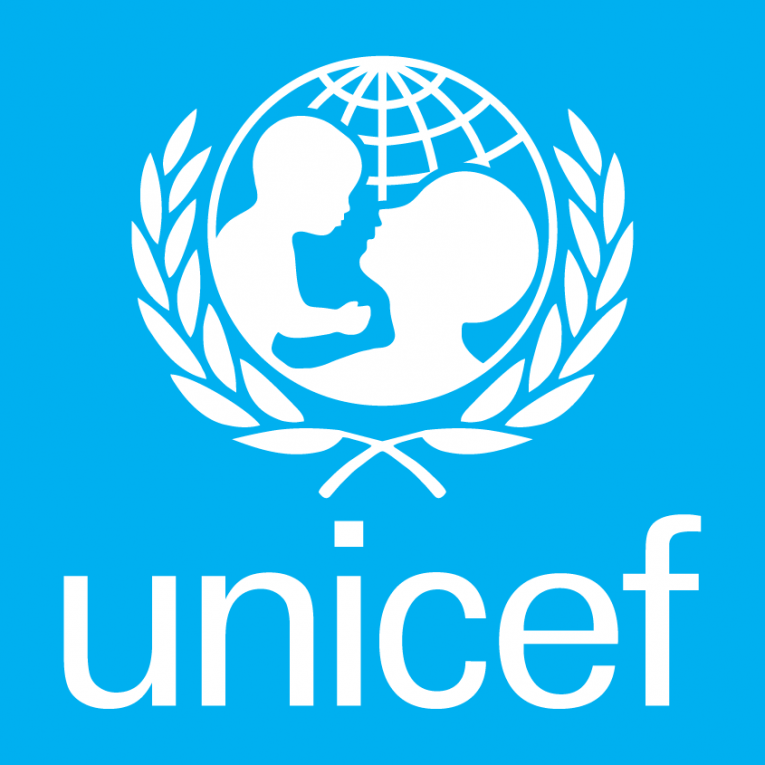

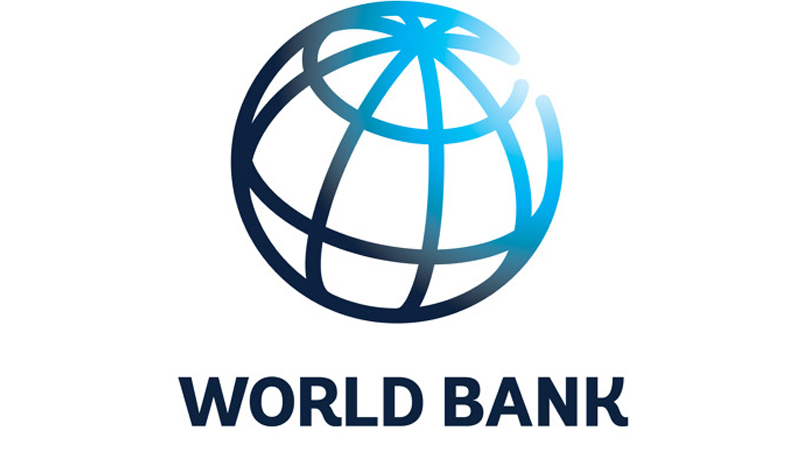
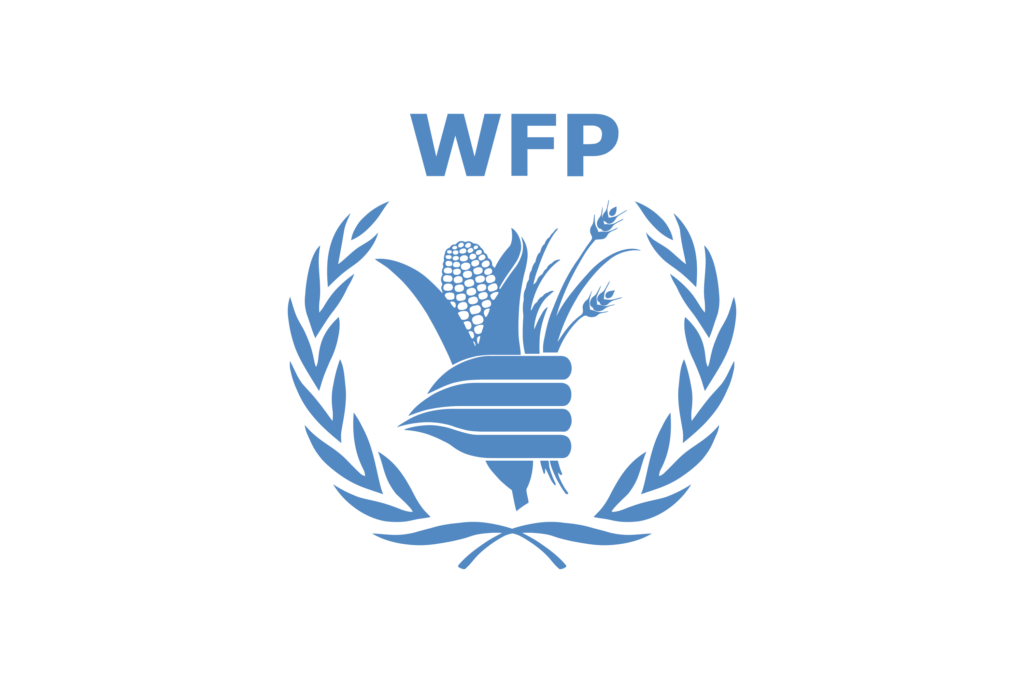
Latest Updates
Brief of University Seminars on Malnutrition Issues
University Seminars on Malnutrition Issues IntroductionBuilding on the discussions initiated during district-level debates, SPO in collaboration with IRC will support...
University Seminars on Malnutrition Issues
University Seminars on Malnutrition Issues IntroductionBuilding on the discussions initiated during district-level debates, SPO in collaboration with IRC will support...
Network Leadership Capacity Building for Civil Society Organizations (CSOs)
Three-Day Capacity Building Workshop for CSOs on Effective Policy Dialogues Strengthening Participatory Organization (SPO), in collaboration with IRC, MERF, and...
One-Day Capacity Building Workshop on Nutrition Programming: Empowering CSO Management
Three-Day Capacity Building Workshop for CSOs on Effective Policy Dialogues Strengthening Participatory Organization (SPO), in collaboration with IRC, MERF, and...
Report-2 Days CB Workshop (Hyd)
edit post SBCC-Toolkit Urdu (Nutrition-Specific) byadminFebruary 20, 2025 Read More edit post SBCC-Toolkit Urdu (Nutrition-Sensitive) byadminFebruary 20, 2025 Read More...
Provincial Level Networking Workshop for Local Organizations
edit post SBCC-Toolkit Urdu (Nutrition-Specific) byadminFebruary 20, 2025 Read More edit post SBCC-Toolkit Urdu (Nutrition-Sensitive) byadminFebruary 20, 2025 Read More...
Feel free to reach out to us for any inquiries, feedback, or support—we’re here to help!

